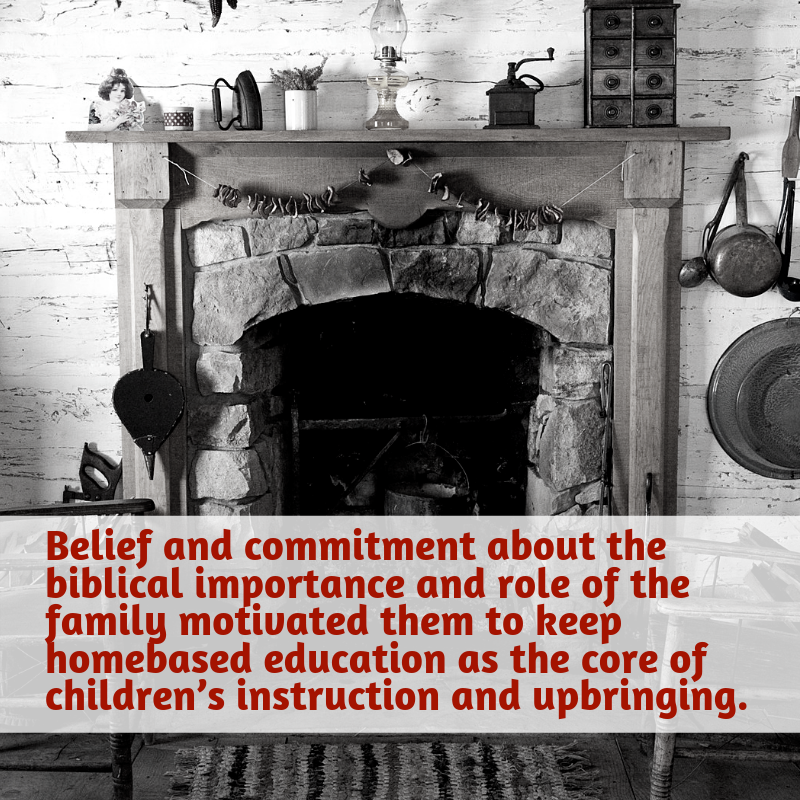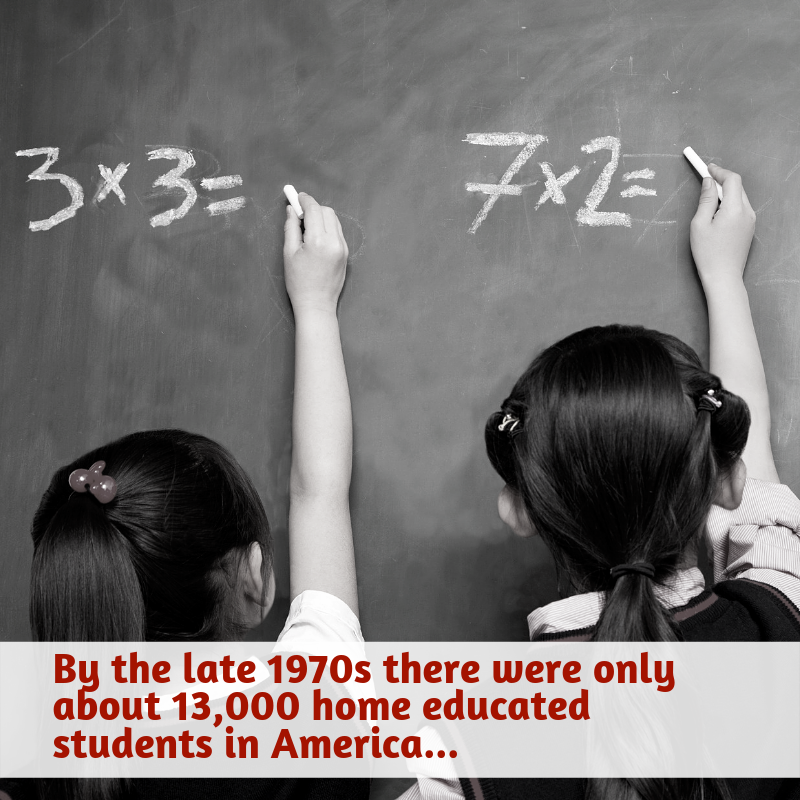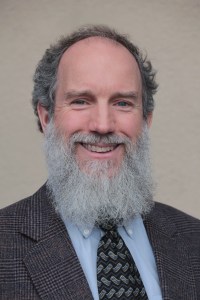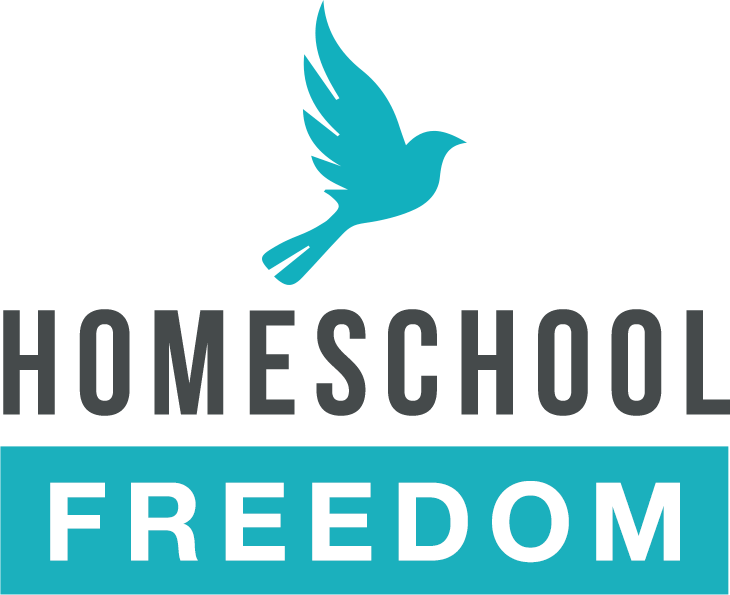A brief history of homeschooling in the United States
Dr. Brian RayHome-based education is millennia old. It has been the norm around the world for most of humankind’s history.
Colonial Period
During the colonial period in the United States, the family, that is, parents and siblings, were the normal, foundational, and predominant educational environment for most children. It is nearly impossible to uncover exact statistics or percentages regarding how many (what are now called) school-age children were engaged more of their time in home-based education than in school-based education. Evidence suggests that the large majority were mainly home educated, and this included both instruction in reading, writing, and arithmetic and faith, morals, and interpersonal relationships or social skills. Tutoring, typically in the child’s home, also was not uncommon in colonial times (Gordon and Gordon 1990, p. 245-73).
Historians have found that colonial children were at least as likely to be taught reading at home as at a school. As two students of tutorial education observe: “Domestic education [i.e., home-based education, homeschooling] was common throughout the 1600s and 1700s” (Gordon and Gordon, p. 245). Historian Lawrence Cremin clearly and with fine detail explains the centrality of the household in colonial education: “The colonists were heir to Renaissance traditions stressing the centrality of the household as the primary agency of human association and education …” (Cremin 1970, p. 124). Regarding New England villages where population density was such that households were

“…afforded ample opportunity for social intercourse among the members of different families and for joint sponsorship of readily accessible churches and schools. There, it was ideology rather than geography that established the primacy of the household; for the Puritans considered the family the basic unit of church and commonwealth and, ultimately, the nursery of sainthood,” (Cremin 1970, p. 135-36).
In other words, belief and commitment about the biblical importance and role of the family motivated them to keep home-based education as the core of children’s instruction and upbringing. Along these lines, another historian clearly implied that the norm in colonial times was parents as the main academic instructors of their children: “Indeed, by the mid-nineteenth century, the role of the schools had expanded to such an extent that many of the educational tasks initially assigned to parents, such as teaching children the alphabet and how to read, became the responsibility of the schools,” (Vinovskis 1995, p. 14-15).
Several historical accounts make it clear that in addition to reading, writing, arithmetic, and trade and vocational skills, parents were always instructing their children in values, morals, behavior, and all sorts of things related to faith. Piety was an integral part of the warp and woof of a child’s education (Cremin 1970, p. 129-32). To illustrate this, a very common way to teach reading was by using the Bible or catechisms for both individual reading and reading aloud, individually or in unison. Further, “… piety simply incorporated civility …” and “… the cardinal virtues and their application in human affairs…” (Cremin 1970, p. 131).
It is a complicated, and probably pointless, task to attempt to determine what percentage of children in colonial times attended a school and, of those, for what number of days per year they attended and for what number of hours per day. What portion of all children’s education was conducted at home versus at school? By all accounts, it appears the preponderance of the large majority of children’s seven-day daytimes were home-based.
The 1800s to mid-1900s
Home-based education continued to be common for most of the time for most children’s lives through the nineteenth century. By one estimate, in 1870 only about 65 percent of 5- to 17-year-olds were enrolled in public elementary and secondary schools (a higher percent attended at the elementary level) and the average number of days the average pupil attended school per year was only 78 (United States Department of Education 2010, p. 63-64). And there is evidence that many of those school days lasted only a few hours. It is likely that many children were mainly at home with their families the other 287 days per year. During the 19th century “… the school was a voluntary and incidental institution: attendance varied enormously from day to day and season to season …” (Tyack 1974, p. 16). For all children, whether they attended a school or not, schooling, or book learning, was only a small and often incidental part of the total education of a child since he:
“…acquired his values and skills from his family and from neighbors of all ages and conditions. The major vocational curriculum was work on the farm or in the craftsman’s shop or the corner store; civic and moral instruction came mostly in church or home or around the village where people met to gossip or talk politics. A child growing up in such a community could see work-family-religion-recreation-school as an organically related system of human relationships,” (Tyack, 1974, p. 15).
As laid out by Ray (2005, p. 122-25), the preceding quote by Tyack uniquely and accurately captures what most current homeschool parents and advocates would explain as the essence of parent-led home-based education (or homeschooling) (Harris 1988; Klicka 1992). This is not to say these advocates would endorse the schooling of children during the era described but only that such an “organically related system” is what they envision as good education.
Then along came more immigrants, other features of American life, and the big push for “common schools.” Horace Mann and many others planned to use the common school, under government control – at first, more-local government control – as an instrument to create a new public philosophy “… to be shared by Americans of every background and persuasion” (Cremin 1961, p. 10-11). What became fervor for the state shaping citizens’ thinking and behavior would have a massive impact on home-based education because Mann and others abandoned the idea of changing society by affecting adults and decided to go after the hearts and minds of children: “Men are cast-iron, but children are wax” (Glenn 1988, p. 79). They wanted to build, via state-run schooling, a new vision and praxis propelled by their understanding of the good American and the good society. “The objective of this state-controlled system of popular education had little to do with economic or egalitarian goals; it was to shape future citizens to a common pattern,” with children taken from their families and the churches so that the schools would bring up citizens properly fit for the state (Glenn 1988, p. 76).
A society-wide battle ensued, with many opposing such a plan (Ball 1994; Carper and Hunt 2007). The primary concern of many “… was with the potential for an inappropriate concentration, in the hands of the state, of responsibility and initiative for defining the objectives of education and thus of the character and convictions of the rising generation” (Glenn 1988, p. 121). Those advocating state control ultimately held sway and Protestant and Roman Catholic schools “… were increasingly viewed as un-American and divisive” by the 1870s (Carper and Hunt, 2007, p. 200).
Home-based, or domestic, education was headed for a rapid swift decline. By 1899-1900, 72 percent of 5- to 17-year-olds were enrolled in public schools, but their average attendance was still only 99 days per year (United States Department of Education 2010, p. 63-64). Until this time, it appears that the local community controlled the classroom of public (or common) schools, including both their explicit and hidden curriculums (Tyack 1974, p. 14, 49), but that was changing rapidly.
Mid-twentieth century
Homeschooling was nearly extinct by 1970; an estimated 87 percent of 5 to 17 year-olds were enrolled in public schools and their average school attendance was 162 days per year (United States Department of Education 2010, 63-64), and almost all the others were in private schools. In the meanwhile, control of public schools was moving toward strong state-level control. By the 1980s, federal level control over public schools was increasingly manifest. Patricia Lines, a student of the modern homeschooling movement, estimates that by the late 1970s there were only about 13,000 home-educated students in America, about .03 percent of school-age children at the time. Parents, Christians or otherwise, acting as the daily, primary teachers and moral instructors of their children had essentially passed away (Lines 1990).

Fertile soil for a re-birth of home education
By mid-century, many scholars and large portions of the Christian community were convinced that secular humanism had become a stronger force, at least within state-run public schools, than any of the major religious groups. As two historians of American education observed: “By the mid-1960s, however, growing disenchantment with the ongoing secularization of public education, deepening concern about trends in American culture related to drugs, sex, and disorder; a resurgent evangelical faith … sparked the phenomenal increase in the number of Christian day schools” (Carper and Hunt 2007, p. 201-203).
At about that time, things started changing in paradigm-shifting ways amongst evangelical, Sola-Scriptura (i.e., Scripture alone as the sole rule of faith and practice) Christians’ awareness. Logician and theologian Gordon Clark, in a 1955 address, laid out the following: “The strategy of the humanist is to occupy the time and the attention of children to such an extent that they will have no opportunity to hear the Gospel.
The public schools with their compulsory attendance are to be used for the inculcation of secularism” (Clark 2009, p. 2). A few years later, Anglican theologian Harry Blamires proclaimed the following: “There is no longer a Christian mind” (Blamires 1963, p. 3). He then subsequently discussed the demise of Christianity in education. In The Messianic Character of American Education, theologian Rousas Rushdoony emphasized that all education is essentially religious. Furthermore, he wrote:
“Statist education increasingly assumes that (1) the child is the child of the state or the property of the state, which can therefore interfere extensively with parental authority. (2) The state “priesthood” of educators are best able to rear the child and prepare him for life, viewed as statist life. (3) Statist education is alone “objective” and hence true, the state having the impartiality and transcendence of a god. Statist education is thus entrance into the true catholicity of the civil religion of the modern state. It is the religious ideal of the French Revolution realized,” (Rushdoony 1963, p. 323).
Many view Rushdoony as an early inspiration behind the homeschool movement (Edgar 2001). Another theologian, Francis Schaeffer, warned his brethren about public schools: “In the United States the materialistic, humanistic world view is being taught exclusively in most state schools” and, to dominate society, the special target of humanists is the school (Schaeffer 1982, p. 11, 113).
Further, Christians were becoming aware of research that described and explained the negative treatment, in public schools, of the biblical perspective and long-held values of aspects of America they respected. For example, researcher Paul Vitz’s comprehensive work examined “… how religious and traditional values are represented in today’s public school curricula …” and reported that the “…general finding of the studies is that public school textbooks present a biased representation both of religion and of many traditional values,” and that, in many ways, religion is ignored or

treated as if it were unimportant in the lives of Americans (Vitz 1985, p. 1). Around the same time, government-held public hearings revealed that
“…parents, public school teachers, and interested citizens spelled out their eye-witness accounts of the psychological abuse of children in the public schools. They related how classroom courses have confused schoolchildren about life, about standards of behavior, about moral choices, about religious loyalties, and about relationships with parents and peers…These Hearings explain how schools have alienated children from their parents, from traditional morality such as the Ten Commandments, and from our American heritage,” (Schlafly 1984, p. 11-12).
Many Christians were carefully examining the norm in American life: sending children away all day to be taught by adults who were often viewed as strangers in a place called public school.
Renascence Focusing on Home-Based Education
Following soon after the sudden expansion of Christian day schools, more conversations emerged about educating children in venues other than institutional schools. For example, Paul Lindstrom and Christian Liberty Academy Satellite Schools (CLASS) began in 1967 promoting parents teaching their children at home using CLASS materials, and the organization continues serving homeschoolers today (CLASS 2008). An increasing number of popular writers were also weighing in on the state of public schooling and what ought Christians to do. For example, one critic warned: “Public school teachers … have become militantly politicized and are now the most active and powerful advocates of the political and social agendas of the radical left” and the “… humanist worldview now dominates American public education so completely, that the only escape is the private school or the home school,” (Blumenfeld 1984, p. x, 261).
Gregg Harris, a major figure in the nascent homeschool movement, began teaching workshops on homeschooling across America in 1981, and published the book The Christian Home School in 1988. In 1982, James Dobson twice interviewed education experts – who promoted family-based alternatives to conventional schooling – on his widely-heard Focus on the Family radio broadcast, and these programs caught the attention of many parents in the Christian community. Furthermore, the author has met a number of Christians across the United States who claim they
thought of or decided to teach their children at home, during the 1970s and 1980s, before they had ever heard of homeschooling. Many Christians think God was supernaturally working in the hearts and minds of believers, motivating them to engage in home-based education, for advancing God’s kingdom.
The homeschooling movement exploded in the United States during the 1980s and 1990s. Today it consists of roughly 2.2 million children in the grade levels of Kindergarten through 12 (Ray, 2015).
Schooling and Education
Over time, it appears that schooling and educating have increasingly merged in their meaning. On the one hand, meaning the same thing does not help us in knowing how to use them. On the other hand, the merger of meanings substantiates the idea that all schooling involves education.
School typically means a place or organization outside the home where teachers instruct, teach, or drill students (i.e., children and youth) in specific knowledge or skills such as reading, language, mathematics, and arts and, allegedly by many persons, and only secondarily in manners, philosophy, and morals. Schooling is, therefore, that which occurs at or related to a school.
Education usually means the bringing up and instruction of children and youth to enlighten their understanding, instill their philosophy, develop their morals, form their manners, correct their tempers, give them knowledge and train their skills such as in reading, language, mathematics, and arts, and fit them for usefulness in their families, associations, and communities. Education comprehends all that series of instruction and discipline which is intended to accomplish the aforementioned.
Much of the public tend to think that institutional schools, especially state-run public ones, only school children but in reality they also educate them, always and at all times. That is, philosophers, sociologists, and historians of education and curriculum planners recognize that all schooling is education. All schooling is the teaching, training, and indoctrination – to imbue with particular opinions, points of view, or principles – of children and youth. The impression that many parents and the public have and that many public-school teachers and advocates present is that school is mainly or only about instructing students in knowledge and skills. Many people think that public schools do not teach children in ways of sectarian values and beliefs, worldview, and how to judge or evaluate things according to philosophical presuppositions. That is to say, much of the public believes public schools are “neutral” on issues of values and worldview. This issue explains much of the expansion of homeschooling in the late twentieth and early twenty-first centuries in the United States.
One reason that many homeschool parents prefer the term home-based education, rather than homeschooling, is that they recognize that all forms of schooling engage all students, always, in education. That is, all students in public schools, private schools, and in home education are being developed with respect to their knowledge and skills and mentally, morally, and aesthetically by way of instruction by their main teachers (i.e., parents in homeschooling) and others such as peers and adults outside the family. And home educators intentionally purpose to educate their children and readily recognize that they are doing so. Therefore, education occurs in all schooling settings, whether public school, private school, or homeschool. The recognition of the educational function of all forms of schooling is at the core of the modern homeschool movement and its inherent basis in faith.
In conclusion, homeschooling is in reality and is recognized by those in the home-educating community as a comprehensive form of education. Homeschooling is parent-led, home-based, private, not tax-funded (in general; in the United States it is largely not tax-funded; see note),1 available to the public in that is not legally prohibited in many (if not most) nations, and increasingly popular.

Dr. Brian Ray
President & Founder
Brian D. Ray, Ph.D. and others founded the NHERI institute in 1990 as a 501(c)3 non-profit research organization and is the president of the institute. He holds his Ph.D. in science education from Oregon State University, his M.S. in zoology from Ohio University, and his B.S. in biology from the University of Puget Sound. Dr. Ray has been a middle school and high school classroom teacher in both public and private schools, an undergraduate college professor, and a university professor at the graduate level. He is a leading international expert with regard to homeschool (home school, home education) research. Dr. Ray executes and publishes research, speaks to the public, testifies before legislators, and serves as an expert witness in courts.
References
- Ball, William Bentley. Mere creatures of the state?: Education, religion, and the courts, a view from the courtroom. Notre Dame, IN: Crisis Books, 1994.
- Blamires, Harry. (1963). The Christian mind: How should a Christian think? Ann Arbor: Servant Books, 3-4.
- Blumenfeld, Samuel L. N.E.A.: Trojan horse in American education. Boise, ID: The Paradigm Company, 1984.
- Carper, James C., and Thomas C. Hunt. The dissenting tradition in American education. New York, NY: Peter Lang Publishing, Inc., 2007.
- Christian Liberty Academy Satellite Schools. What Is CLASS? Retrieved 2/54/2008 from http://www.homeschools.org/whatIsCLASS/index.html, 2008.
- Clark, Gordon H. “The Reformed Faith and the Westminster Confession.” The Trinity Review (May-June 2009): 1-6.
- Cremin, Lawrence A. American education: The colonial experience, 1607-1783. New York, NY: Harper & Row, Publishers, 1970.
- Cremin, Lawrence A. The transformation of the school: Progressivism in American education, 1876-1957. New York, NY: Vintage Books, a division of Random House, 1961.
- Edgar, William. “The passing of R. J. Rushdoony.” First Things (August/September 2001): 24-25.
- Glenn, Charles L. The myth of the common school. Amherst, MA: University of Massachusetts, 1988.
- Gordon, Edward E., and Elaine H. Gordon. Centuries of tutoring: A history of alternative education in America and Western Europe. Lanham, MD: University Press of America, 1990.
- Harris, Gregg. The Christian home school. Brentwood, TN: Wolgemuth and Hyatt, Publishers, Inc., 1988.
- Klicka, Christopher J. The right choice: The incredible failure of public education and the rising hope of home schooling. Gresham, OR: Noble Publishing Associates, 1992.
- Lines, Patricia M. Estimating the home schooled population (working paper OR 91-537). Washington DC: Office of Educational Research and Improvement, U.S. Department of Education, October 1991.
- Ray, Brian D. (2015, January 6). Facts on homeschooling. Retrieved March 13, 2015 http://www.nheri.org/research/research-facts-on-homeschooling.html.
- Ray, Brian D. Worldwide guide to homeschooling. Nashville, TN: Broadman & Holman, 2005.
- Rushdoony, Rousas J. The messianic character of American education. Nutley, NJ: Craig Press, 1963.
- Schaeffer, Francis A. A Christian manifesto. rev. ed. Westchester, IL: Crossway Books, 1982.
- Schlafly, Phyllis, ed. Child abuse in the classroom. Alton, IL: Pere Marquette Press, 1984.
- Tyack, David B. The One Best System: A history of American urban education. Cambridge, MA: Harvard University Press, 1974.
- United States Department of Education. Digest of education statistics, 2009. Washington, DC: National Center for Education Statistics, 2010.
- Vinoskis, Maris A. (1995). Education, society, and economic opportunity: A historical perspective on persistent issues. Chelsea, MI: BookCrafters Inc., pages 14-15.
- Vitz, Paul C. Religion and traditional values in public school textbooks: An empirical study. Washington, DC: National Institute of Education, 1985.
- 1.An entire article will be devoted to the tax-funding of education based in the home. It is a rather complicated issue.
